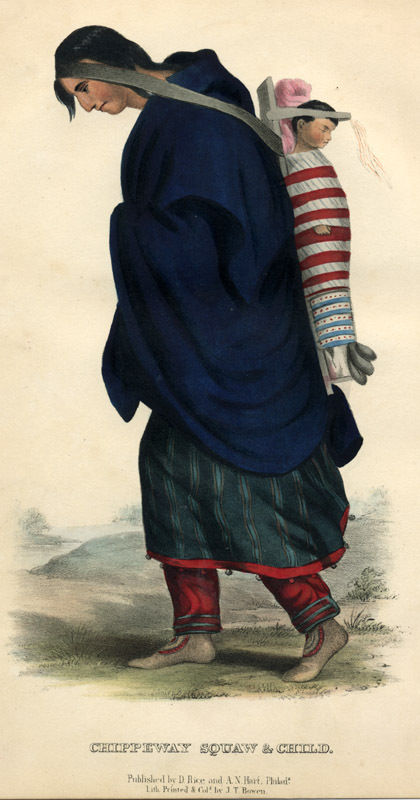
19th, 20th & 21st Century Fine Prints
707-546-7352 · fax 707-546-7924 · web: www.annexgalleries.com · email: artannex@aol.com
Chippeway Squaw & Child by John T. Bowen

Chippeway Squaw & Child
John T. Bowen
Chippeway Squaw & Child
John T. Bowen
1801 - 1856 (biography)This is from "History of the Indian Tribes with Biographical Sketches and Anecodotes of the Principal Chiefs" by Thomas L. McKenney (Superintendent of Indian Affairs 1824-1830). The volume was embellished with one hundred portraits from the Indian Gallery in the War Department at Washington. Published by D. Rice & Company, Philadelphia, 1872 in two volumes.
An image whose execution transcends generations of turmoil, the archaically named “Chippewa Squaw and Child” nevertheless remains one of the truest early visual documentations of an Indigenous person on newly colonized land, seen through the lens of the colonizer. Faithfully copied from the Charles Bird King paintings by printmaker John T. Bowen, several portraits of Indigenous leaders who visited Washington D.C. in the hopes of saving their land and people were published in a three-volume tome at the behest of Thomas McKenney, the director of the Office of Indian Affairs (now the Bureau of Indian Affairs) and writer James Hall in 1836.
It’s believed that McKenney’s Quaker faith informed his unusually diplomatic approach to discussions with tribal leaders; knowing of his government’s violently anti-Indian stance, he feared the demise of the Indigenous peoples he met and hoped to encourage colonizers to reconsider their ideas of who the tribespeople were, stating that they should be “looked upon as human beings, having bodies and souls like ours.” He commissioned James Hall to research the portrait-sitters and write biographies to the best of his ability for each one. The entire project took eight years to complete. Sadly, many of King’s portraits were destroyed in a fire at the Smithsonian Institution in 1865.
The name “Chippewa” is the American anglicization of Ojibwe, referring to one of the groups of Indigenous peoples of the Anishinaabe culture, whose territories are found in southeastern Canada and northeastern United States. Here, John T. Bowen uses his lithography in combination with hand coloring to depict an Ojibwe mother carrying her child in a traditional baby basket, which is held in place by a leather strap wrapped around her forehead. She wears a robe and skirt of European cloth, likely obtained through trade, and traditional leather boots. In reference to the term “squaw,” a morpheme of a traditional Narragansett word for “woman”, it became a demeaning colonizer term in the 17th century for an Indigenous woman and is now considered a slur.


